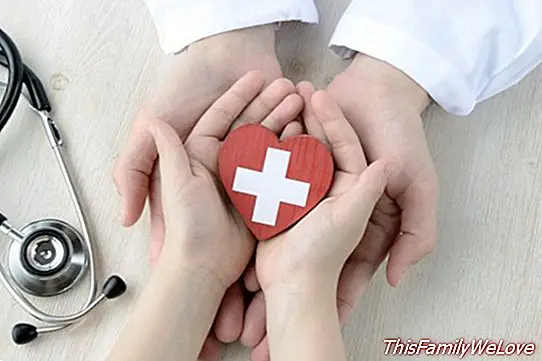The green tips of the AEP to protect children from tobacco

Many smoking parents try to protect their children from tobacco smoke with ineffective measures, perhaps because they do not know that smoking is not enough with the closed door of the kitchen, the open window or on the terrace. For this reason, the AEP, Spanish Association of Pediatrics, has promoted a campaign for a house and a smoke-free car on the occasion ofWorld No Tobacco Day.
Although the number of smokers has decreased since the implementation of the anti-smoking law, still "in Spain, half of the children live in environments with the presence of environmental tobacco smoke, a source more harmful than many of the air pollutants put together, "says Dr. Juan Antonio Ortega, coordinator of the Environmental Health Committee of the AEP.
For this reason, pediatricians insist that you should not smoke in any room of the house or in the vehicle, even when children are not present. The main reason is that "the smoke is very ubiquitous and persistent because it weighs more than the air and the particles remain impregnated on the surfaces, so that they are later inhaled by children", explains Dr. Ortega.
Secondhand smoke is more harmful
Did you know that second-hand smoke - that is, the environmental smoke formed by the mixture of smoke exhaled by smoking parents and the smoke that comes from the burning of the ember of the cigarette - is of lower quality than the one inhaled by the smoke itself? smoker?
If you do not want your children to be passive smokers, do not smoke in their environment. And is that being a slow combustion in this secondhand smoke a number of chemical substances are concentrated much greater than just in the mainstream. In total, it contains 4,000 chemical substances, and more than 40 of them are carcinogenic. This smoke is a cause of cancer in nonsmokers and increases and is associated with many diseases in childhood.
Third-hand smoke is even more toxic for children
The third-hand smoke is even worse because it is the smoke that comes from the combustion of the ember of the cigarette. "This smoke is characterized by a high concentration of particles and gases that weigh more than the air that are concentrated below the meter of height and, therefore, are more toxic for children and end up adhering to objects that they play with or touch: furniture, curtains, carpet, car ... *, explains Dr. Ortega. Through contact, children can be exposed to many of the chemical compounds in tobacco, as they can put their hands in their mouths.
Recommendations of the pediatricians of the AEP
The first, and ideal, is to stop smoking, but if they do not, they ask that special care be taken and that smoking be avoided inside the vehicle or at home, even if the children are not present. The least harmful thing is to smoke on the street and, if you have a smoker's robe or clothes, it is necessary to remove it when entering the home or vehicle and wash your hands. "Modalities of tobacco such as hookahs and electronic cigarettes are equally harmful and, therefore, should not be smoked in closed environments," warns Dr. Ortega.
World No Tobacco Day. The 4 best 'green tips' for prevention
As indicated by the WHO in its motto for the World No Tobacco Day 2018, "Tobacco and heart disease", Among the health problems of children derived from environmental tobacco smoke are not only respiratory diseases such as asthma or rhinitis, but also highlight alterations in the lipid profile, related to cardiovascular diseases.
Because cardiovascular diseases are usually associated with adults, cardiovascular risk begins in the first ten years of life. Therefore, the coordinator of the Environmental Health Committee of the AEP has established 4 green tips to protect children:
1. Prevention during pregnancy and the first year of life. Avoid active and passive exposure to tobacco smoke.
2. Focus efforts at 3 and 5 years, since it is in this period when the atheroma plaques begin to develop, that is, the formation of fat in the blood vessel that can cause the arteries to close.
3. Encourage healthy infant feeding from birth.
4. Develop a habit of physical activity in children from an early age.
In this line, Dr. María José Mellado, president of the AEP, recalls that "children are particularly vulnerable to the effects of smoke, because their height are more exposed to pollutants and breathe more times per minute than an adult" , while indicating the responsibility of adults to ensure their protection and prevention of diseases."Pediatricians also have to play a relevant role in the battle against the exposure of children to tobacco and its smoke, giving parents the appropriate advice so that their children are exposed as little as possible to these harmful substances," he says. .
Campaign 'Homes and cars without smoke': # AdiósTabaco
Among the actions that will be carried out, the pediatricians will be able to deliver a certificate in the consultations that the parents will have to sign in front of the child to promise to keep the home and the vehicle smoke free. "In addition, they will have to hang this document in a visible place to sensitize parents of the danger that this habit poses to the health of their children and remind them of the commitment they have acquired," says Dr. Ortega. Along with this certificate, a series of recommendations and a kit 'without bad fumes' will be delivered. Dr. Ortega estimates that this campaign will "one in 10 parents" quit smoking.
Marisol Nuevo Espín
Advice: doctor Juan Antonio Ortega, coordinator of the Environmental Health Committee of the AEP.




